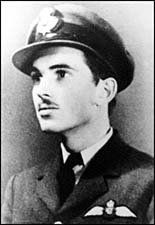By John Gillespie Magee, Jr.
(A sonnet written by John Gillespie Magee, an American pilot with the Royal Canadian Air Force in the Second World War. He came to Britain, flew in a Spitfire squadron, and was killed at the age of nineteen on 11 December 1941 during a training flight from the airfield near Scopwick.)
Portions Of This Lovely Poem Appear On The Headstones
Of Many Interred In Arlington National Cemetery,
Patricularly Aviators And Astronauts
“Oh, I have slipped the surly bonds of earth,
And danced the skies on laughter-silvered wings;
Sunward I’ve climbed and joined the tumbling mirth of sun-split clouds –
and done a hundred things You have not dreamed of –
wheeled and soared and swung high in the sunlit silence.
Hovering there I’ve chased the shouting wind along
and flung my eager craft through footless halls of air.
“Up, up the long delirious burning blue
I’ve topped the wind-swept heights with easy grace,
where never lark, or even eagle, flew;
and, while with silent, lifting mind I’ve trod
the high untrespassed sanctity of space,
put out my hand and touched the face of God.”
High Flight was composed by Pilot Officer John Gillespie Magee, Jr., an American serving with the Royal Canadian Air Force. He was born in Shanghai, China in 1922, the son of missionary parents, Reverend and Mrs. John Gillespie Magee; his father was an American and his mother was originally a British citizen.
He came to the U.S. in 1939 and earned a scholarship to Yale, but in September 1940 he enlisted in the RCAF and was graduated as a pilot. He was sent to England for combat duty in July 1941.
In August or September 1941, Pilot Officer Magee composed High Flight and sent a copy to his parents. Several months later, on December 11, 1941 his Spitfire collided with another plane over England and Magee, only 19 years of age, crashed to his death.
His remains are buried in the churchyard cemetery at Scopwick, Lincolnshire.
Read here our most popular Post:
Michael Robert Patterson was born in Arlington and is the son of a former officer of the US Army. So it was no wonder that sooner or later his interests drew him to American history and especially to American military history. Many of his articles can be found on renowned portals like the New York Times, Washingtonpost or Wikipedia.
Reviewed by: Michael Howard

